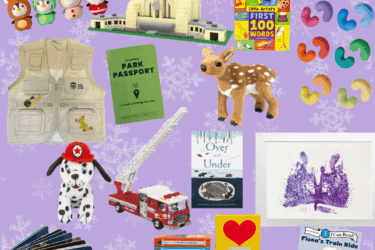The day your enthusiastic kindergartener comes home reading with that little twinkle in her eye is truly a memorable and monumental day. So why is she suddenly struggling to keep up? What happened? It’s a cycle some kids go through, educators say. That initial excitement of “Mommy I can read!” can easily go into the downward spiral without keeping up. So how can you win this never-ending battle? Persistence, consistency and patience.
WHAT IS READING LOSS?
Reading loss happens easily as texts get more difficult. Kids can easily get behind if they are not reading during long summer months, or they are learning at home and not matching up with curriculum taught at school. It takes extra effort to get back on track.
“Reading truly does affect all academic areas of a child’s education,” says Maria Balfour, a reading specialist in Fairfield, Ohio. “Reading is required to perform well in other content areas such as math, science and social studies.”
Getting behind in reading can suddenly lead to a snowball effect as it continues to get harder and harder every year, becoming more demanding as the school year progresses.
“From year to year, reading materials will increase in difficulty across subject areas, so it is very important to meet benchmarks each year,” says Balfour.”
LOVING TO READ
So how can you realistically help your kids squeeze in reading day-to-day? We’ve heard it all: read to them every night. Set an alarm for 20 minutes of reading per day. Read before breakfast, etc. Unfortunately, this isn’t always realistic for every family, if you put forth all of your effort, it can be done.
“There is definitely a shortage of time for many families,” says Balfour. “I think it’s about finding little spaces to incorporate reading, whether it’s having your child read to you in the car on the way to practice or reading together as you wait for an appointment.”
And when you can, blocking out that time to read together is good not only for learning, but for bonding time, too. Of course, blocking out time to read with your child is always great. You can take turns reading to each other or even read out loud together, for example.
“When my children were younger, they always wanted to stay up past their bedtime. I would tell them that as long as they were reading, they could have 15 extra minutes,” Balfour says.
ASSESSING YOUR KIDS
So is your child behind and how do you know? Evidence of background knowledge is a good place to begin, according to Karen Clemons, K – 6 curriculum manager at Cincinnati Public Schools.
“Look at what background knowledge the child has and make sure that they are able to produce simple sounds,” Clemons explains. “And if they are able to do those two things – that will increase their vocabulary and for them to be able to read and understand more complex words depending on their grade level.”
Also, communicate with your child’s teacher to know what is expected of him at school, and from there, you can work at home.
THE HOME ENVIRONMENT
According to Clemons, most materials you need are already where you live.
Embedding learning into the home as early as age 3 or 4 can help your child become a good reader. Spend a little time each day with your kids and work with their letters and sounds. This “simple” task may seem daunting at first, but if you think about it as a “To Do” on your weekly calendar and add it to your daily routine, it will become something that doesn’t feel like a chore to do.
“The more you can find time to read with your child or encourage your child to read at home, the faster gaps will close,” suggests Balfour.
STAY INFORMED
It’s important for parents to stay informed with what is going on in their kids’ school and whether or not they are meeting their benchmarks. Check with your district and communicate with your kids’ teacher as often as possible to see where your kid is. Students are assessed in phonics and fluency through standardized tests for reading comprehension beginning in second grade. Other activities and assessments will occur throughout the year to help measure your kids’ progression.
“This tells us where students fall compared to their peers with reading skills,” says Balfour. “Scores from all of these assessments are shared with parents, as well as the benchmarks for these assessments.”
GETTING BACK ON TRACK
The good news is, getting back on track is doable. With accelerated learning in the classrooms and a little push and shove at home, your child can start right where they left off and excel. Normalize reading by making it a priority to model it yourself.
“I had to calendar it as a meeting and I had to take it seriously,” Clemons says. “A lot of times with parents working full-time, it’s more than a notion to say that I’m going to go home, I have a family, I have dinner to prepare, the kids might have sports and now I’m going to go read a book at 10 o’clock at night – it’s just not realistic.”
BRING IN IMAGINATION
This is where creativity comes into play. Have a book on-hand at all times – anytime you have that “in between” time during your kids’ practice, for example, squeeze in some reading time. Once you model that to your children, they will see that you too have time to read. Even swapping out TV time for reading time is another trick which also models a balance between tech (social media) and reading. Time spent on tech can easily take away independent reading time for you and for you to be reading to your kids. However, if you must, there are great reading apps and programs that can work to you and your kids’ benefit. Keeping the balance is key.
“You can also use that time on their devices for their reading,” says Clemons. “There are different tech pieces that incorporate reading. There are a lot of learning games they can use that are structured and are aligned with Ohio Curriculum standards that can also be used as a tech tool and a reading tool as well.”
READ ON!
According to educators virtually everywhere, helping your kids love to read is one of the most important things you can do. Here’s how:
MAKE IT FUN!
• Read with a snack
• Read in bed
• Have them read to a sibling
• Record your child reading, then have him listen in!
• Find a series of books they’ll love (let your child choose)
• Talk about what you’re reading
• Read outloud to them from infancy on
• Be patient and persistent





